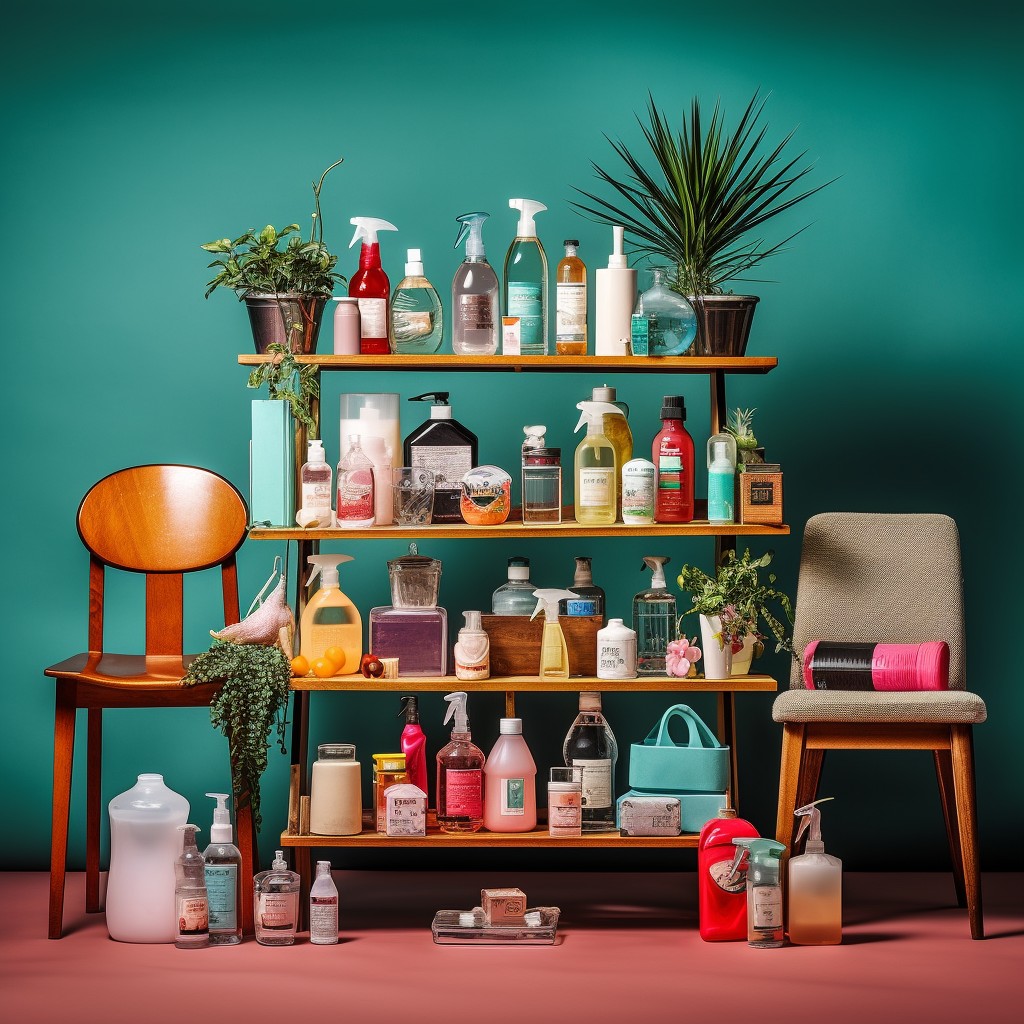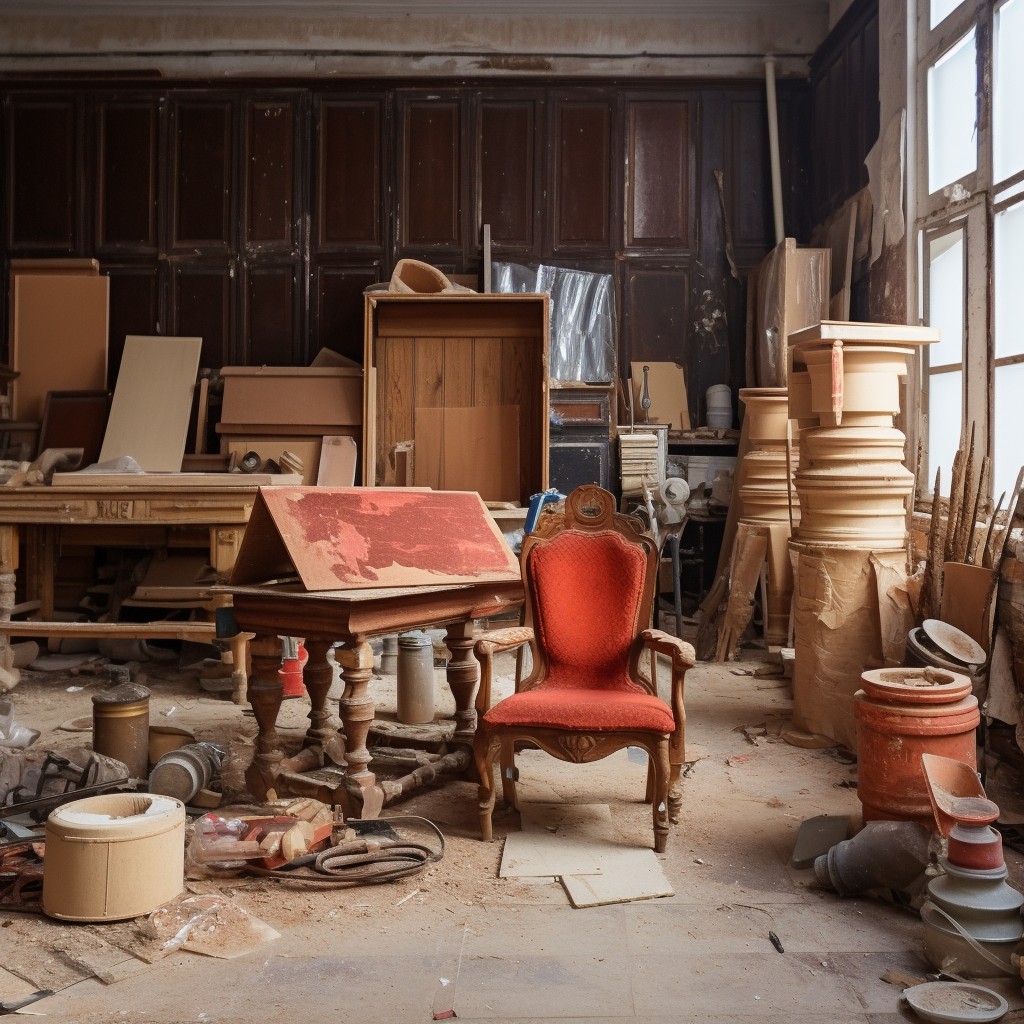Last updated on
Preserving the shine and durability of each furniture piece is essential because well-maintained furniture adds an eloquent touch of class and personality to your living space.
Maintaining your furniture’s pristine condition doesn’t have to be a daunting task. With a few simple tricks and regular care, you can prolong the life of your furniture, keeping it looking as good as new.
Whether it’s dusting, polishing, or dealing with accidental spills, this article covers it all. Stay tuned to uncover the best practices for furniture maintenance, from cleaning techniques to the right products to use, ensuring your furniture retains its charm for years to come.
Key takeaways:
- Use appropriate cleaning products for different furniture materials
- Implement routine maintenance tips based on furniture materials
- Repair minor furniture damage using simple methods
- Take preventive measures to protect furniture from damage
- Follow proper upholstery maintenance techniques
Table of Contents
Choosing the Right Cleaning Products for Your Furniture

When it comes to keeping your treasured furniture pieces in pristine condition, use of appropriate cleaning solutions is pivotal. Fabric, leather, wood, or metal – each material requires different care and consideration.
For fabric upholstery, a gentle yet effective fabric cleaner is your best bet. Always spot test it in an inconspicuous area first to avoid any potential discoloration.
Leather furniture benefits from specially-designed leather cleaners and conditioners. This will not only clean the surface but also prevent cracking and fading over time.
Wooden items require a gentle, non-abrasive cleaner to prevent scratches and retain their lustrous finish. Consider cleaners with natural oils that can nourish the wood.
Lastly, for metal fittings or furniture, a mild dish soap solution works well. Remember to dry thoroughly to avoid rust or corrosion.
Always remember: before applying any new cleaning product, it’s crucial to read and follow the instructions on the label. Failure to do so might cause irrevocable damage to your furniture.
Routine Maintenance Tips for Different Furniture Materials

Caring for wood furniture requires regular dusting using a soft, dry cloth or a microfiber duster to remove surface dust. Avoid excessive moisture as it could damage the wood over time. Polishing should only be done few times a year with a quality furniture polish and not aerosols which may contain silicones causing build-up over time.
On the other hand, metal furniture like aluminium or wrought iron needs its own form of care. Rinse off dirt and mildew, then dry thoroughly to prevent rust formation. Apply a coat of automotive wax or a silicone sealant for added protection.
Caring for plastic furniture is a simple process involving washing with mild detergent and lukewarm water while avoiding abrasive cleaners which could cause discoloration or damage.
Leather furniture requires careful maintenance to keep it looking pristine. Regularly wiping with a soft, dry cloth is key. Avoid cleaning products that can dry out and damage the leather. Using a quality leather conditioner every 6-12 months can keep the material supple.
For upholstered furniture, vacuuming should be a regular activity to remove dust and allergens. Attend to spills and stains immediately using a mild, water-free solvent or upholstery cleaner to maintain the fabric’s quality.
Just remember, always adhere to the manufacturer’s care instructions to ensure optimal maintenance of your furniture.
How to Repair Minor Furniture Damage
Mending scratches, eliminating ring marks, fixing dents; these are common issues that often mar the appeal of your favorite furniture pieces. You can often tackle them at home without professional help.
For scratches, a simple touch-up marker that matches your furniture color can work wonders. Just trace over the scratch, and voila!
Ring marks from hot or moist objects can be a nightmare on wooden surfaces. Apply a little bit of toothpaste, rub it in gently with a soft cloth and wipe the surface clean. The marks soon become a thing of the past.
Dents, on the other hand, need a bit more finesse. Pour a small amount of water on the dent, cover the spot with a soft cloth, and apply a warm iron to the area. This will cause the wood to swell and level out over time. Remember, too much heat can discolor or damage the wood, so it’s all about balance.
Lastly, remember the golden rule: when in doubt, test it out. Always try any method on a hidden area first to ensure it does not cause unwanted damage. This precautionary step can save you a lot of hassle down the line.
Preventing Furniture Damage: Protective Measures
Taking proactive steps to safeguard your furnishings can significantly increase their lifespan and keep them looking as good as new. Here are a few effective strategies:
- Use Coasters: They guard against water rings and heat damage caused by cups or hot dishes placed directly on furniture surfaces.
- Avoid Sunlight: Prolonged sun exposure can fade or warp furniture. If avoiding sunlight isn’t possible, use window treatments or UV-protective sealants.
- Keep Pets Trained: Ensuring your pets are well-trained can prevent them from scratching or soiling your furniture.
- Utilize Slipcovers: Slipcovers are an excellent way to protect the upholstery, especially if heavy usage or potential staining is a concern.
- Regular Dusting: Dust has abrasive qualities that can scratch furniture surfaces over time. Regular dusting keeps it at bay.
- Be Careful While Moving Furniture: A lot of dings and scratches happen during moves. Ensure proper handling, or better yet, employ furniture pads while shifting.
Remember, preventive care is fundamental to keep your furniture in prime condition.
How to Maintain the Upholstery On Your Furniture
Vacuum regularly to keep dust and dirt from wearing down the fibers, eliminating the risk of dingy-looking upholstery. For a thorough job, utilize an upholstery attachment, paying extra attention to nooks and crannies where dust accumulates.
Immediately treat any spills. Blot, don’t rub, working from the outside of the stain towards the center to prevent spreading. Make sure to use a cleaner specified for your material, and always spot test an inconspicuous area first.
Turn and move cushions around periodically, this helps to distribute wear more evenly and prevent sagging.
Consider professional cleaning yearly or every other year, depending on use and the presence of children or pets. This ensures deep-set dirt and stubborn stains are tackled effectively.
If your upholstery is sunlight sensitive, give thought to strategic placement away from windows or investing in blinds and curtains to shield from direct light. This helps prevent fading and extends the life of your fabric.
Dusting and vacuuming regularly not only enhances the appearance of upholstery but also augments its longevity. Notably, applying fabric protectors might provide an additional safeguard against spills and stains. However, it’s advisable to consult an expert, as the wrong product might cause harm instead of helping.
Remember, taking diligent care of the upholstery can keep your furniture looking new for a longer time. It’s a small time investment that goes a long way in maintaining the aesthetic value of your home.
Understanding Different Types of Furniture Materials
Wood, metal, rattan, and plastics, your furniture could be made from a variety of materials, each unique in their care needs.
Let’s start with wood – a pretty common material especially for vintage furniture. It responds well to moisture but can warp or fade with much exposure. Regular dusting and minimal use of wood cleaners should keep your wooden furniture glowing.
Take metal furniture. Mostly found outdoors or in industrial-style interiors. Although quite durable, corrosive agents can get them rusty. Dry cloth or mild soapy water generally does a good job cleaning metal furniture.
Rattan, well known for its tough, laced structure is sensitive to heat and humidity. Direct sun can wash out its color. Simple vacuuming and wiping with a damp cloth can help retain its look.
And plastics – a modern touch to many homes. Easy maintenance, for sure! But remember to refrain from abrasive cleaners as they could damage the surface.
Recognizing the material of your furniture is half the battle won in maintenance. Knowing what each type needs and doesn’t need will guide the care routines you set out for them.
Basic Guideline On Furniture Polishing
Selecting an appropriate polish is essential. For wood furniture, a beeswax or oil-based polish fares well. Avoid silicon-based polishes as they may often leave a shine, which can accumulate dust.
Once you’ve picked your polish, wipe the furniture surface with a clean, non-abrasive cloth to remove any dust or grime. It’ll also ensure a smooth polish application.
Next, apply the polish using a soft cloth, spreading it evenly across the surface. Less is often more – too much polish can lead to a sticky, glossy finish.
After application, wait for a few minutes to let the polish sink into the material. Then, with another clean cloth, buff the surface following the grain direction of the wood. Continue buffing until you achieve a uniform, lustrous sheen.
Remember, frequency is crucial, too. Polishing too often can reduce your furniture’s life span. Aim for a schedule of every three to six months, depending on the furniture usage and the manufacturer’s instructions.
FAQ
What is the best way to care for wood furniture?
The optimal method to care for wood furniture involves regularly wiping the piece with a damp cloth, followed by drying any remaining moisture with a dry, cotton cloth to avoid surface scratches.
How do you clean and protect wood furniture?
To clean and protect wood furniture, it’s recommended to dust it regularly, ideally every few days or weekly at least, and apply a furniture polish or a homemade alternative monthly to enhance its shine and mitigate minor scratches or nicks.
How often should you oil furniture?
Wood furniture should typically be oiled once a month, or whenever it appears dry, which can be identified by water soaking into the wood rather than beading up.
How do you keep wood furniture from drying out?
To prevent wood furniture from drying out, avoid direct sunlight or heat vents, and regularly treat it with a protective layer of soft wax.
What are effective methods for removing stains from wood furniture?
Effective methods for removing stains from wood furniture include using a mixture of vinegar and olive oil, applying baking soda paste, using a wood cleaning product specifically designed to remove stains, or potentially gently sanding the stained area if other methods are ineffective.
What key steps should be taken to prevent scratches on wood pieces?
To prevent scratches on wood pieces, regularly dust them using a soft, dry cloth, avoid sliding objects across their surfaces, and apply a protective finish.
How can preservation techniques help extend the lifespan of antique wood furniture?
Preservation techniques, such as regular dusting, avoiding direct sunlight, using a humidifier, and applying wood-specific cleaners, can help extend the lifespan of antique wood furniture.
You may also like to read:
